Hair Loss - Diagnosis and Treatment
Hair loss is a condition that impacts millions of people worldwide. While shedding anywhere between 50 to 100 single strands of hair per day is normal, any hair loss that exceeds this limit might be a reason for concern
There are many reasons why hair might fall out, and hair loss can range from mild thinning to total baldness. Some people may experience focal patches of hair loss, while some others might have more diffuse hair loss. If you are facing any form of abnormal hair loss, consult your dermatologist for a proper diagnosis and hair fall treatment.
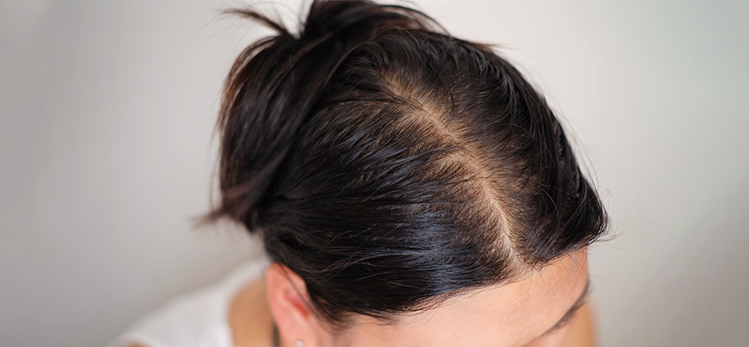
How Is Hair Loss Diagnosed?
Numerous reasons can trigger hair loss, and it is important to get a proper diagnosis from a dermatologist before beginning any hair fall treatment.
Dermatologists employ several methods to diagnose hair loss in men and women as listed below:
1. Diagnostic tests
In men, hair loss is predominantly caused by hereditary male pattern baldness, but in women, it could be triggered by various reasons. To correctly diagnose the cause of hair fall in women, dermatologists recommend a few diagnostic tests, including hormone levels (testosterone, DHEA, prolactin, androstenedione, thyroid-stimulating hormone, and luteinizing hormone). One may also be asked to get their serum ferritin, total iron-binding capacity (TIBC), and complete blood count (CBC) checked to rule out hair fall due to iron deficiency.
2. Hair pull test
The hair pull test is probably the simplest diagnostic test for hair loss. The dermatologist gently pulls a small bunch of hair strands (approximately 100) to determine excessive hair loss. Loss of one to three hair per pull is considered normal.
3. Scale biopsy
In this procedure, a small section of the scalp, usually 4mm in diameter, is removed from the patient’s head and clinically evaluated in a laboratory to diagnose hair loss.
4. Densitometry
This is a technique of evaluating hair loss by measuring the degree of miniaturization of the hair shaft. A handheld device called the densitometer is used for the procedure.
Scale For Measuring Hair Loss
There are various scales for measuring the extent of hair loss in men and women.
Hamiltion-Norwood Scale
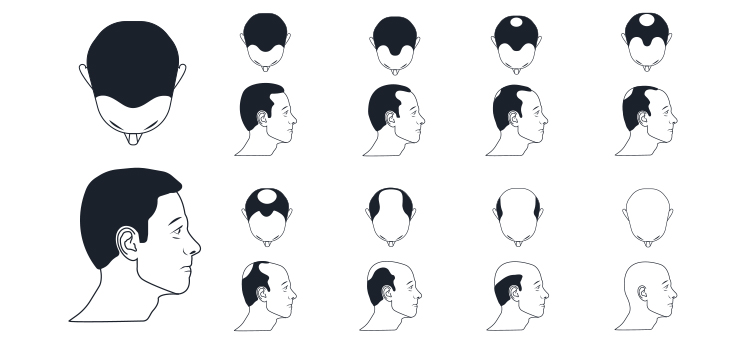
In men, the Hamilton-Norwood scale (or simply the Norwood scale) is the most commonly used system to track the extent of hair loss. It categorizes male pattern baldness into seven different stages. This detailed classification system is based on frontal thinning and frontoparietal and frontal recessions.
Ludwig Scale
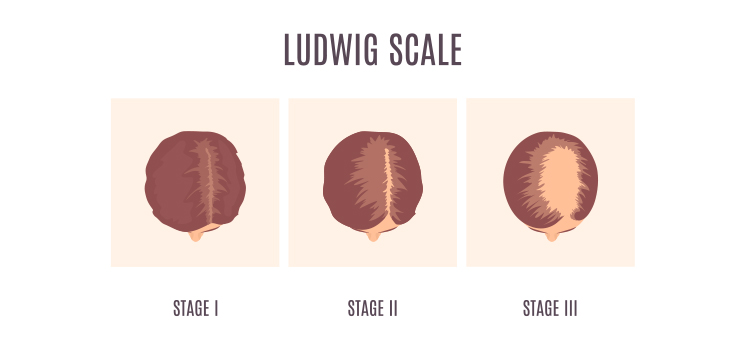
For measuring hair loss density in women, specialists generally use the Ludwig scale. The Ludwig scale categorizes female pattern hair loss into three stages based on the severity of hair loss so that the best hair loss treatment for each case can be determined.
Savin Scale
Similar to the Ludwig scale in many ways, the Savin scale divides hair loss in women into eight stages of increasing crown balding. This scale can also be used to measure overall thinning.
Here are a few treatments to reduce hair fall
Hair fall treatments vary depending upon your sex and the type of hair loss you are experiencing. While there are countless products in the market that promise to restore your hair, it is recommended that you consult a dermatologist to understand various hair fall treatments that might benefit you.
Some popular hair fall treatments you may avail of are:
1. Minoxidil
Minoxidil is a prescription medication that has been scientifically proven to be an effective hair fall treatment for androgenetic alopecia (AGA). It is prescribed in the form of foam or a solution for topical application for the treatment of AGA. Regular use can not only reverse hair loss but can also promote new hair growth. This medication is not known to cause any adverse side effects and is a scientifically-backed hair fall treatment.
2.Finasteride
Another medication commonly used as a hair fall treatment is finasteride. It is a prescription drug that blocks the conversion of testosterone to dihydrotestosterone (DHT), a hormone that causes male pattern hair loss. Scientific evidence suggests that oral finasteride can halt male pattern hair loss and promote scalp hair growth. However, finasteride is considered suitable only for men.
3. Hair transplantation
In case of severe hair loss, one can opt for hair transplantation. The procedure involves the surgical transplantation of skin grafts from parts of the scalp containing active hair follicles to bald spots. The common methods of hair transplantation are follicular unit strip surgery (FUSS) or follicular unit extraction (FUE). The procedure may take about four to eight hours.
4. Corticosteroids
Corticosteroids are medications containing steroids that are used as a hair fall treatment to halt alopecia areata, an autoimmune disorder. In some cases, topical corticosteroid drops are injected directly into the bald spots on the scalp. Steroids may also be taken in the form of oral pills. While oral consumption of corticosteroids may provide temporary positive effects, they may also lead to unpleasant side effects.
In Closing Thoughts
Millions around the world experience hair loss in varying degrees. There are different kinds of hair loss triggered by many reasons. The pattern of hair loss is largely based on the sex of a person, and there are different diagnostic tools to evaluate the extent of hair loss in men and women. The good news is, there are several scientifically-backed hair fall treatment options available that can help you reverse baldness and even regrow lost hair in some cases. If you are experiencing excessive hair loss, get yourself evaluated by an experienced dermatologist and start a suitable hair loss treatment plan to manage your condition.
Myth Busters HairFall
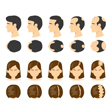
Androgenetic Alopecia - Everything You Need To Know
Have you been experiencing excessive hair fall over a prolonged period of time? It could be an early sign of androgenetic alopecia. It is a hair loss disorder common in both genders and can lead to progressive thinning and even baldness in some patients if not caught and treated early.

How To Make Hair Grow Faster For Men
A head full of healthy hair is a matter of confidence. Hair has its own mechanism of growing and shedding, and it is when this mechanism is thrown off that growth is hindered. Especially in the case of males, hair growth faces a lot of hiccups that can easily be managed.
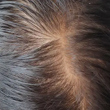
Female Pattern Baldness - Causes & Treatments
Have you suddenly noticed an increase in the number of hair strands on your pillow in the morning? Or is your ponytail getting thinner by day? Well, you might be suffering from female pattern baldness. While that does sound scary, identifying it early on is key to treating this condition effectively. So keep reading to know what this is, how you can identify it, and most importantly, what treatments you can avail of to get your beautiful lustrous hair back.
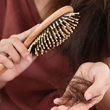
What Are The Reasons For Hairfall?
Almost everyone experiences some amount of hair thinning over the years. Shedding around 50 to 100 single strands of hair per day is considered normal. However, losing more than 150 strands a day, experiencing sudden thinning, or developing circular bald patches on your scalp are reasons for concern. Hair loss occurs when new hair doesn’t grow fast enough to replace the amount of hair you lose daily. Hair can fall due to various reasons, with hereditary hair loss and poor nutrition being the most common hair fall reasons.

Expert Approved Tips For Hair Growth
What can be more debilitating than seeing hundreds of hair strands shedding from your scalp every time you brush your hair? Also, excessive molting occurs during seasonal changes that can be very stressful for you. Although it’s okay to lose between 50-100 strands every day, according to the American Academy of Dermatology, the problem occurs when you start shedding more than normal. But that doesn’t mean you have to feel helpless as there are ways to grow your hair back. Even if you are coping with baldness or alopecia, certain hair growth tips from dermatologists can come to your rescue. Read on to discover how these tips can be your savior when abnormal hair fall problems are in sight.
Trending Videos
+ 5 Sources
LMRC - GGI-CO-A2-DMA-300026127-300026127-WM-J21-282
© 2021 Dr. Reddy’s Laboratories Ltd. All rights reserved.